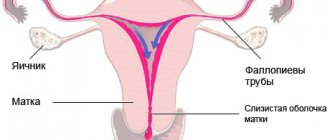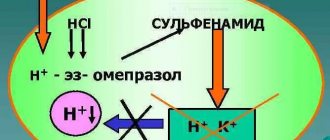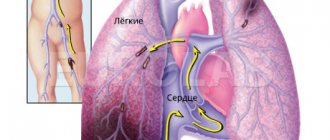ALT analysis
An analysis to determine the concentration of this substance in the body is used to diagnose liver disease and monitor the effectiveness of prescribed therapy. The main indication for the study is suspicion of acute or chronic hepatitis of viral or toxic origin, cirrhosis of the liver, primary malignant neoplasms of the organ or secondary metastatic lesions.
The growth of this substance in the body during hepatitis begins much earlier than the disease enters the icteric stage. In this way, it is possible to diagnose the disease at an early stage and begin treatment in a timely manner.
The analysis is also carried out as part of a comprehensive screening examination in order to assess the condition of the liver. The study is carried out before planned hospitalization for surgical treatment. The analysis is prescribed in conjunction with an aspartate aminotransferase test.
The level of ALT must be assessed together with other enzymes in pathologies of the pancreas and gallbladder - pancreatitis, cholecystitis, cholelithiasis. An analysis may be prescribed if the patient complains of general weakness of unknown etiology, fatigue, icteric skin and sclera, abdominal pain, a feeling of heaviness in the right hypochondrium, nausea, vomiting.
This analysis should also be performed in case of myocardial infarction and myocarditis. But in case of heart damage, assessing the ALT level is of secondary importance. The study is prescribed if the patient is suspected of myositis, myodystrophy, pain in the heart muscle, which cannot be explained by excessive physical exertion or another objective reason.
All donors are required to undergo this test.
The concentration of the level of this substance in the body must be assessed in case of chronic diseases, before prescribing medications - antitumor, antituberculosis. The study is also prescribed to assess the condition of the liver over time to assess the tolerability of a particular drug.
What may affect the results
Intense physical activity the day before and even a few days before the test can lead to damage to muscle tissue (the so-called muscle fiber tear) and, accordingly, an increase in ALT levels. For the same reason, analysis taken after injury is uninformative. Taking alcohol and certain medications (antibiotics, nonsteroidal anti-inflammatory drugs, antitumor drugs, oral contraceptives, etc.) often distort the results of the study. The list of medications taken should be discussed with the doctor who prescribed the test, and those that are taken should be discontinued without risk to health.
Deciphering the ALT analysis
Alanine aminotransferase reference values for adults:
| Norm in U/l | Norm in mmol/l | |
| men | 45 | 252 |
| women | 34 | ≈ 190 |
WHY IS ALT LEVEL DETERMINED?
ALT is an enzyme of the transaminase group, present in a certain amount in the cells of the liver, kidneys and cardiovascular system. Determining the concentration of this substance allows you to get an idea of the condition of the liver and heart, as well as the effectiveness and safety of the treatment. The basic indication for diagnosis is the suspicion of liver disease, cirrhosis, viral or toxic hepatitis (chronic and acute). Also, a blood test for ALT allows for the timely detection of malignant primary or secondary metastatic liver lesions.
An increase in the level of the above enzyme in various types of hepatitis manifests itself much earlier than the pathology progresses to the icteric stage. Thanks to this, it becomes possible to timely diagnose the disease at the initial stage of its development and begin treatment, which can significantly increase the survival rate of patients with this diagnosis.
The analysis is part of standard screening diagnostics, which allows for a comprehensive assessment of the patient’s liver condition. The study is also carried out as part of preparation before planned hospitalization for surgical intervention. Often the analysis is prescribed in combination with an analysis of aspartate aminotransferase levels.
To assess the health status of a patient suffering from diseases of the pancreas (diabetes, pancreatitis, etc.) and gall bladder (cholecystitis, cholelithiasis, etc.), determining the level of ALT is also necessary, as is identifying the amount of other enzymes. Diagnosis is carried out as prescribed by the attending physician, in the presence of objective indications - general weakness of unknown origin, fatigue, icteric coloration of the skin and sclera, vomiting, nausea, pain and heaviness in the abdomen and right hypochondrium.
In addition, identifying the level of this enzyme is included in the standard diagnostic protocol for diseases of the cardiovascular system, especially when examining patients with suspected myocardial infarction or myocarditis. In case of organic lesions of the heart muscle, determining the level of ALT is not of paramount importance. Diagnosis is carried out if the patient is suspected of having myositis, muscular dystrophy and pain in the heart, which cannot be explained by excessive physical activity or any other objective reason.
All donors without exception undergo diagnostic testing of ALT levels. The concentration of this enzyme is necessarily assessed in the presence of certain types of chronic pathologies and before prescribing hepatotoxic drugs (antirheumatic, anticancer, antituberculosis and antimicrobial), as well as to monitor the liver condition during their use.
Aspartate aminotransferase (AST)
AST also increases in acute hepatitis and other severe lesions of hepatocytes. A moderate increase is observed in obstructive jaundice, in patients with liver metastases and cirrhosis. De Ritis coefficient, i.e. the ALT/AST ratio, normally equal to 1.33, is lower than this value in liver diseases, and higher in heart diseases.
If the activity of ALT and AST increases, we recommend that you sign up for a consultation with a hepatologist and undergo a liver examination using the Fibroscan apparatus -
Elastometry / elastography of the liver
Tests for coronavirus
- Test for coronavirus
- Coronavirus test for organizations
- Testing for coronavirus at home
- Testing for coronavirus at home in 12 hours!
- Testing for coronavirus in Lyubertsy in 12 hours!
- Testing for coronavirus in Nekrasovka in 12 hours!
- Testing for coronavirus in Korolev in 12 hours!
- Test for coronavirus on the Sokol metro station
- Coronavirus test at Kolomenskaya metro station
- Coronavirus test at Voykovskaya metro station
- Test for coronavirus in Nekrasovka
- Coronavirus test in Korolev
- Test for coronavirus in Lyubertsy
- Test for coronavirus in Mytishchi
- Test for coronavirus at home Mytishchi
- Test for coronavirus at home Korolev
- Test for coronavirus at home Lyubertsy
- Test for coronavirus at home Nekrasovka
Any tests can be taken at clinics in the East Clinic network.
Normal indicators
Units of measurement: U/l.
Reference values
| Floor | Age | AlAT level, U/l |
| Both | < 5 days | < 49 |
| 5 days - 6 months | < 56 | |
| 6 – 12 months | < 54 | |
| 1 – 3 years | < 33 | |
| 3 years - 6 years | < 29 | |
| 6 – 12 years | < 39 | |
| Male | 12 - 17 years old | < 27 |
| > 17 years old | < 41 | |
| Female | 12 - 17 years old | < 24 |
| > 17 years old | < 31 |
What is alanine aminotransferase (ALAT)
The functioning of the human body is ensured by multiple chemical processes that are both cyclical and interconnected, continuous and consistent. Enzymes play a major role in blood filtration and digestion systems. Alanine aminotransferase (ALAT) is the main liver enzyme involved in amino acid metabolism. Most of the enzyme is found in the liver, with small amounts in the kidneys, cardiac and skeletal muscles.
Alanine itself is important as a source of rapid glucose production to nourish the brain and central nervous system. Studying the level of ALT and AST in the blood greatly facilitates the diagnosis and prognosis of severe diseases and damage to the liver, heart and pancreas.
The specificity of ALT makes it possible to differentiate diseases according to the degree of excess of standard values, which is very important when symptoms are weak and the manifestations of various diseases are similar. Using ALT readings in combination with other tests, the doctor can determine the extent of organ damage and make a prognosis for the course of the disease.
ALT elevation levels
The standard ALT indicator as part of the diagnostic complex “blood biochemistry” may differ slightly in different laboratories, but on average the limits of this indicator for men are 10–40 U/l, for women – from 7 to 35 U/l. The criteria for differentiating diseases are levels of excess of the ALT norm:
Minor:
- taking medications and chemicals (antibiotics and barbiturates, chemotherapy and drugs),
- cirrhosis of the liver,
- fatty liver disease;
Moderate and medium:
- alcohol poisoning,
- some forms of hepatitis,
- growth problems in adolescents;
High:
- cancer tumor necrosis,
- viral hepatitis,
- state of shock.
Features of ALT norms in pregnant women
In a healthy woman, the ALT norm does not change during pregnancy and should coincide with the values before conception. In cases where ALT is slightly increased during pregnancy, causes not related to diseases can be considered:
- course of intramuscular injections;
- physical activity that is excessive for a pregnant woman;
- addiction to fast food;
- uncontrolled intake of dietary supplements;
- obesity;
- fetal pressure on the biliary tract, preventing the outflow of bile.
Normalization of nutrition, moderation of physical activity, weight control and choleretic drugs normalize enzyme parameters.
Importance of liver enzymes
The content of the article
A separate class of enzymes are transferases, catalysts for the transfer of molecular residues and functional groups from molecule to molecule.
Transferases are involved in the transformation of nucleic acids and amino acids, lipids and carbohydrates. The most significant liver enzymes are considered to be ALT and AST, which perform several tasks at once.
- Molecular intracellular synthesis ensures sufficient liver functionality.
- Enzymatic diagnostics, carried out by measuring the degree of enzyme activity in the blood. The reliability of this method is based on the fact that liver enzymes in a healthy person are contained inside the cell, leaving it only after the death of the cell itself.
- The prognostic role of enzymes is associated with the characteristics of their dynamics in the blood, which directly depends on the nature of the course and severity of the disease.
- The medicinal role of enzymes is to use special enzyme preparations when they are deficient in the body.
Why is an ALT test done?
The endogenous enzyme ALT serves as a reliable marker of liver tests - liver pathologies in diagnostic laboratory practice. Alanine aminotransferase is formed due to intracellular synthesis, so it is present in the blood in small doses.
Blood test for ALT
in a healthy person it shows a minimum value. Diseases or damage to the liver cause the death of its cells, and the intracellular liver enzyme ALT is released into the blood, which, along with other indicators, is a fairly informative indicator of disease processes. Any deviation of the enzyme indicator from the standard range, especially upward, is an indisputable sign of an incipient liver disease or an extensive process of its destruction
Elevated ALT levels may also be observed in pregnant women, during a heart attack, and in certain pathological conditions. An increase in the dose of ALT in the blood is observed before the manifestations of jaundice, which allows for early diagnosis of liver diseases.
Important Notes
Material for research
Children under 7 years of age: venous blood/capillary blood (for special indications). Children over 7 years of age and adults: venous blood.
Capillary blood collection for research is carried out only for children under 7 years of age and adults whose veins are difficult to access (for special indications)!
According to GOST R 53079.4-2008, indications for taking capillary blood are possible in newborns, in patients with very small or hard-to-reach veins, with large-area burns, and in severely obese patients.









